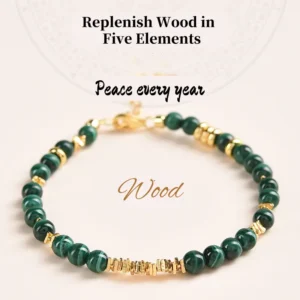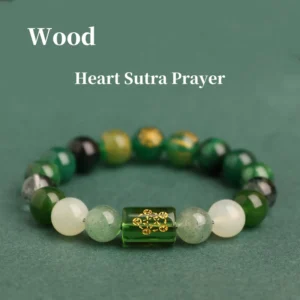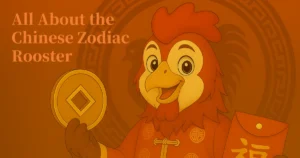
Ways the Wood Element Can Transform Your Energy: Feng Shui, TCM & Taoist Insights
In the ancient wisdom of Chinese metaphysics, the Five Elements—Wood, Fire, Earth, Metal, and Water—form the foundation of understanding the universe’s cycles and the interconnectedness of all things. Among them, the Wood element stands as a symbol of growth, vitality, and renewal, weaving its influence through philosophy, medicine, feng shui, and seasonal traditions. Let’s explore the multifaceted essence of the Wood element across these realms.
Wood Element in Chinese Philosophy: The Force of Growth and Adaptability
Wood Element in Traditional Chinese Medicine (TCM): Nurturing the Body’s Vitality
Wood Element and the Chinese Zodiac: Growth, Vision, and Vitality
Wood in Feng Shui: Cultivating Positive Energy at Home
Wood Element in the 24 Solar Terms: Syncing with Seasonal Rhythms
Wood Element in Taoism: Unity with Nature’s Flow
Embracing Wood Energy in Daily Life
1.Wood Element in Chinese Philosophy: The Force of Growth and Adaptability
In Chinese philosophy, the Wood element embodies the energy of spring—the season of new beginnings. It is associated with qualities like flexibility, resilience, and upward momentum, much like a tree that bends with the wind but never breaks. Philosophers viewed Wood as a representation of qi (life force) in its active, expanding phase, driving all forms of growth, from the sprouting of a seed to the development of ideas.
Central to this philosophy is the concept of balance. Wood thrives when supported by Water (which nourishes it) and gives rise to Fire (as wood fuels flame), yet it can be constrained by Metal (which cuts it). This interplay reflects the dynamic harmony of nature—a reminder that growth requires both freedom and structure. For humans, embodying Wood energy means embracing change with grace, pursuing goals with determination, and staying rooted in one’s values while reaching for new heights.

2.Wood Element in Traditional Chinese Medicine (TCM): Nurturing the Body’s Vitality
In Traditional Chinese Medicine, the Wood element governs the liver and gallbladder, organs responsible for detoxification, emotional regulation, and the smooth flow of qi. When Wood energy is balanced, the liver efficiently processes toxins, and emotions like anger or frustration are managed healthily. An imbalance—whether excess or deficiency—can manifest physically (e.g., headaches, digestive issues) or emotionally (e.g., irritability, stagnation).
TCM practitioners align healing with Wood’s natural rhythms. Diets rich in Wood-associated foods—green vegetables, sprouts, and sour flavors (like lemons)—are recommended to support liver health. Lifestyle practices such as gentle stretching (to “unblock” stagnant qi) and waking early (to sync with the liver’s peak energy time, 1–3 a.m.) also nurture Wood balance. Even emotionally, TCM emphasizes the importance of “letting go” to prevent qi from getting stuck—much like a tree releasing old leaves to make way for new growth.
3.Wood Element and the Chinese Zodiac: Growth, Vision, and Vitality
In the Five Elements theory (Wu Xing), the Wood element symbolizes growth, renewal, and upward energy — much like the sprouting of trees in spring. In the context of the Chinese Zodiac, individuals with a dominant Wood element are often born in years ending with 4 or 5 (e.g., 1974, 1985, 1994, 2005). These Wood-type personalities are visionary, ambitious, and full of creative drive. They tend to align strongly with Zodiac signs such as the Tiger and the Rabbit, which are naturally associated with Wood energy. These signs thrive on movement, kindness, and idealism. People with Wood-element influence often seek personal growth and social harmony, and they flourish in environments where they can express their ideas freely. To enhance their elemental balance, Wood-sign individuals can benefit from green tones, nature-based Feng Shui remedies, and supportive crystals like green aventurine or jade. Understanding your connection to the Wood element can offer deep insight into your personality and help you align your energy with your goals.
4.Wood in Feng Shui: Cultivating Positive Energy at Home
In classical Feng Shui, Wood is one of the Five Elements (Wu Xing) and represents upward growth, health, and family harmony.Feng shui, the art of harmonizing spaces with natural energy, harnesses the Wood element to invite growth, creativity, and abundance. Wood energy is strongest in the east (symbolizing sunrise and new beginnings) and southeast (linked to wealth and prosperity) sectors of a home or workspace. To activate Wood energy in these areas, feng shui experts recommend:

- Plants: Living plants (especially those with upward growth, like bamboo or ferns) are the most direct way to introduce Wood energy. They purify the air while symbolizing vitality.
- Colors: Green and teal (Wood’s primary colors) in decor—such as curtains, paintings, or furniture—amplify its energy.
- Materials: Wooden furniture or decor (e.g., a wooden desk or bookshelf) reinforces stability and growth.
However, balance is key: too much Wood can lead to restlessness, while too little may cause stagnation. Pairing Wood with Water elements (like a small fountain) nourishes it, creating a harmonious flow.
5.Wood Element in the 24 Solar Terms: Syncing with Seasonal Rhythms
The 24 solar terms—ancient markers of seasonal change—are deeply intertwined with the Wood element, especially in spring. “Start of Spring” (Lichun), the first solar term, marks the awakening of Wood energy as nature emerges from winter dormancy. This is when farmers begin planting, aligning their work with Wood’s growth-oriented force.
Other Wood-associated terms include “Awakening of Insects” (Jingzhe), when rising temperatures stir dormant life—mirroring Wood’s ability to break through barriers. During these terms, traditional practices emphasize nurturing new projects, focusing on personal growth, and eating fresh, seasonal foods to align with Wood’s vitality. Aligning your lifestyle with the 24 Solar Terms helps maintain inner balance and seasonal wellness in a modern context.

6.Wood Element in Taoism: Unity with Nature’s Flow
Wood represents the birth phase in Taoist cosmology.Taoism, which teaches living in harmony with the Tao (the “Way” of nature), sees the Wood element as a manifestation of the Tao’s creative power. Taoist philosophers observe that trees grow without force—they bend, adapt, and reach for the light, embodying the Taoist principle of wu wei (effortless action).
For Taoists, cultivating Wood energy means embracing simplicity and aligning with natural laws. Meditations focused on trees or spending time in forests (known as “forest bathing”) are ways to absorb Wood’s calming, regenerative energy. This practice isn’t just spiritual—it’s a reminder that growth, like the Tao, is a natural process that unfolds when we let go of control.
7.Embracing Wood Energy in Daily Life
Whether through adjusting your home’s feng shui, eating seasonally, or simply pausing to appreciate a tree’s resilience, the Wood element offers timeless wisdom: growth is a journey of balance—rooted in strength, yet flexible in spirit. By integrating its principles, we can nurture not just our spaces, but our own capacity for renewal, creativity, and harmony with the world around us.
So, Whether spiritually, environmentally, or physically, Wood reminds us that all growth starts with intention and balance.









